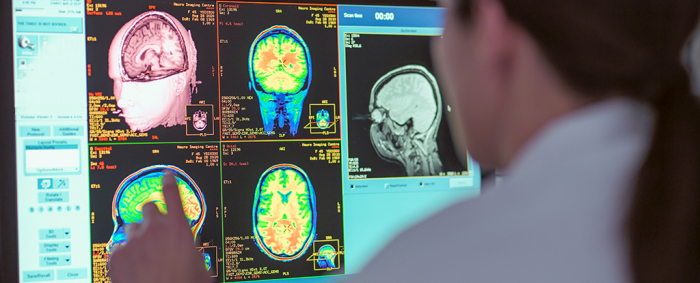A personalized vaccine for glioblastoma – the most aggressive and fatal type of brain cancer – has extended the survival of four humans in the first clinical trial of its kind.
The newly fashioned medicine works by supplying the immune system with a way to 'recognize' the tumor and an 'instruction manual' for its entire transcriptome. This reveals where each and every gene in the tumor can be turned on or off.
Equipped with such vital information, the immune system can reprogram the cancer's defenses and launch a more successful attack.
In the recent clinical trial, four patients with treatment-resistant glioblastoma received either two or four doses of the vaccine. This resulted in significant and rapid immune activation.
Just hours after the vaccines were administered, researchers noticed a spike in pro-inflammatory proteins known to recruit killer white blood cells to the scene.
This early boost to the immune system was also linked to short-term side effects typical of an immune response, like nausea, low fever, and chills, which gradually faded over the next day or two.
"In less than 48 hours, we could see these tumors shifting from what we refer to as 'cold' – immune cold, very few immune cells, very silenced immune response – to 'hot,' very active immune response," explains oncologist and pioneer of the vaccine research, Elias Sayour from the University of Florida.
"That was very surprising given how quick this happened, and what that told us is we were able to activate the early part of the immune system very rapidly against these cancers, and that's critical to unlock the later effects of the immune response."
Historically, patients treated for glioblastoma with chemotherapy, radiation, and surgery can hope to live for about six months, give or take, with no disease progression.
With this new vaccine, one patient experienced eight months of progression-free survivorship and another experienced nine months.
A third patient lived for a further nine months with recurrent glioblastoma. Precise survival information has not yet been reported for the fourth patient, who is the first participant in an expanded phase 1 clinical trial. Usually, the median survivorship for recurrent glioblastoma is between five and eight months.
The promising results build on a previous trial that tested the vaccine on 10 pet dogs suffering from brain tumors. Currently, dogs with this terminal diagnosis and no other treatment have a median survival rate of 35 days. With the vaccine, that number jumped to 139 days.
"I am hopeful that this could be a new paradigm for how we treat patients, a new platform technology for how we can modulate the immune system," says Sayour.
The novel cancer vaccine is based on the same technology as the COVID-19 vaccines, but with a few key differences.
One of the trickiest parts about treating glioblastoma tumors is that they are heavily shielded from the immune system. The tumor microenvironment (TME) is immunosuppressive, which means it causes immune cells to die if they try to attack.
The new vaccine works by reprogramming the TME using a sample of the tumor itself. By taking the messenger RNA of the tumor and packaging it into a deliverable vaccine, researchers can 'teach' a patient's killer immune cells how to get around the TME.
This double whammy allows the drug to "simultaneously function as vaccines", alerting the immune system to an invader, "and as immunomodulating agents", altering the tumor to be more easily invaded, Sayour and colleagues say.
"Instead of us injecting single particles, we're injecting clusters of particles that are wrapping around each other like onions, like a bag full of onions," explains Sayour.
"And the reason we've done that in the context of cancer is these clusters alert the immune system in a much more profound way than single particles would."
Sayour and his colleagues are now trying to determine how often and in what dosage the vaccine should be delivered for optimal results and safety, and what combined treatment plans work best alongside it. Positive outcomes will also need to be balanced with negative ones to produce the fewest adverse side effects possible.
"I am hopeful for how this could now synergize with other immunotherapies and perhaps unlock those immunotherapies," says Sayour.
The study was published in Cell.
More about:
















































